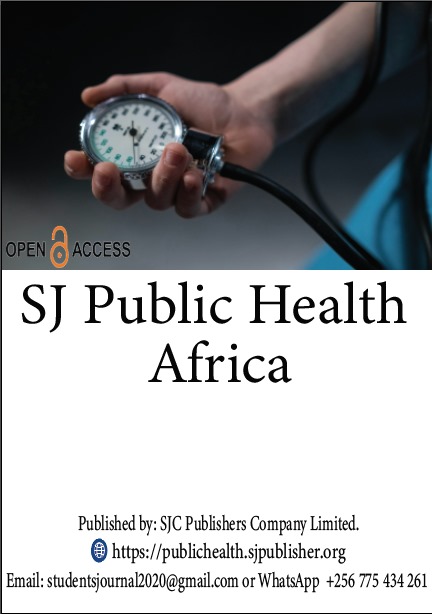RISK FACTORS ASSOCIATED WITH HYPERGLYCEMIA IN HIV PATIENTS ON DTG-BASED ART REGIMEN RECEIVING CARE AT JINJA REGIONAL REFERRAL HOSPITAL. A CROSS-SECTIONAL STUDY.
DOI:
https://doi.org/10.51168/97b1at02Keywords:
Physical inactivity, Dolutegravir-based ART regimen, Risk Factors for hyperglycemiaAbstract
Background
Increasing BMI, Central obesity, Lipodystrophy, Dyslipidemia, Metabolic syndrome, Increased baseline FBS, and ART medications as possible risk factors like hyperglycemia among PLWH. The study aims to assess the Risk Factors associated with hyperglycemia in HIV patients on a DTG-based ART regimen.
Methodology
A hospital-based cross-sectional study design. The study population included all adult PLWHIV initiated on a Dolutegravir-based ART regimen attending the ART clinic at JRRH in Eastern Uganda with a total of 96 Respondents.
Results
Physical inactivity and weight gain appeared to be the major risk factors associated with hyperglycemia in HIV patients on DTG-based ART regimens. The majority 90(93.8%) did not do physical exercise and the prevalence of hyperglycemia in that category was 18(94.7%). 66(68.8%) of the respondents registered weight gain with a prevalence rate of hyperglycemia at 16 (84.2%). 82(85.4%) have been on ART for more than 10 years and these had a prevalence rate of 9(47.4%) and 73(94.8%) of them had normal fasting blood glucose levels. 88(91.7%) had no family history of Type 2 DM and these had a DM prevalence of 15(79.0%). 84(87.5%) never smoked in their lifetime amongst them, and the prevalence of hyperglycemia among them was 15(78.9%). 88(91.7%) had never taken alcohol in their lifetime and had hyperglycemia prevalence among them was 17(89.5%). 53(55.2%) were males with 11(57.9%) prevalence and 43(44.8%) were females with hyperglycaemia prevalence of 8(42.1%).
Conclusion
The majority of HIV patients on DTG-based ART regimen receiving care at Jinja Regional Referral Hospital were predisposed to both lifestyle ART and related risk factors to hyperglycemia which could have cumulatively predisposed them.
Recommendation
More health education and sensitization campaigns should be conducted to raise awareness of the possible risk factors and measures for combating noncommunicable diseases like DM and HTN in all population categories.
Downloads
Published
Issue
Section
License
Copyright (c) 2024 ANNET MUGOYA, Ivan Awach Ogwal (Author)

This work is licensed under a Creative Commons Attribution-NonCommercial-NoDerivatives 4.0 International License.
The journal publishes under the Attribution-Noncommercial-NoDerivatives 4.0 international (CCBY-NC-ND 4.0) license which allows you to Share, Copy and redistribute the materials in any medium or format. The licensor cannot revoke these freedoms as long as you follow the license terms;
- Attribution: You must give appropriate credit, provide a link to the license, and indicate if changes were made. You may do so in any reasonable manner, but not in any way that suggests the licensor endorses you or your use.
- Non-commercial: You may not use the material for commercial purposes. Commercial use is one primarily intended for commercial advantage or monetary compensation.
- No Derivatives: if you remix, transform, or build upon the material, you may not distribute the modified material.
- No additional restrictions: You may not apply legal terms or technological measures that legally restrict others from doing anything the license permits.




